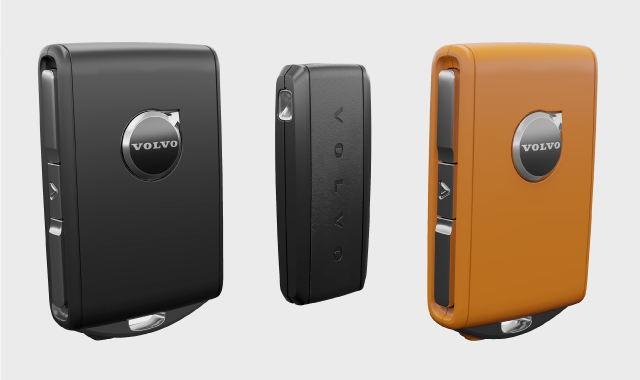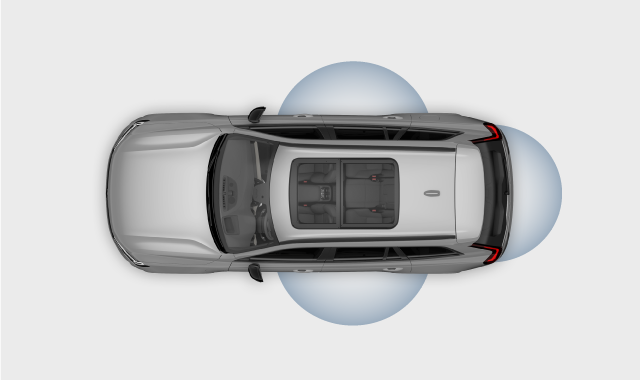
- Standard key
- Key tag
- Care Key
Important
Using keys is fairly straightforward, but you should be aware of the limitations of each key type for safety and security reasons. Therefore, it is important to read the whole section about keys and how to use them.
Wireless key and car technologies may cause disturbances in other devices. You can find more information about these systems in the specifications section of this manual.
For safety and security reasons, never leave unattended keys in an exposed place.
Standard key and Care Key
- Locking button
- Unlocking button
- Boot hatch button
- Panic button
The standard key also has a detachable key blade. This lets you open the driver door even if the key's buttons aren't working or if its battery has gone flat.
The Care Key works just like a standard key, but it lets you set a speed limitation for the car while the key is being used.
Key tag
The key tag is buttonless and lets you automatically lock and unlock the car by touching the door handles when you are within the key detection range.
Key detection range
Your car can detect your key from a short distance away, which allows you to use the keyless lock and unlocking function. This means that you can lock and unlock the car by touching the door handle, without having to use the standard key's buttons or key blade.

The standard key's buttons have a long range of detection. If your car doesn't respond to a button being pressed, try moving closer.
Note
Important
User profiles and keys
You can assign keys to specific user profiles. This allows the car to automatically identify who's unlocking it and apply their customisations. Read about profiles for more information.
Locking keys in
If you lock the car while a key is still inside, the key is temporarily deactivated. It will be activated again when you unlock the car with another valid key.
The double lock also deactivates while the key is locked in.
Note
Additional keys
Your car comes with a limited number of keys. Contact a Volvo dealer or an authorised Volvo workshop if you lose a key or simply require additional keys.
Warning
The keys include a battery. Keep new and used batteries out of reach of children and pets. If batteries are ingested, they can cause serious health issues. If a battery or the key itself is damaged, the item should not be used. Keep defective items out of reach of children and pets.
If you leave a person in the car, ensure that you do not leave a key in the car. This is especially important around children.
Improper use of car opening and starting systems can result in serious personal injury. Always take your keys with you when you leave the car. The car can be started and systems, such as the power windows, can be operated, leading to serious personal injury. Never leave children, disabled persons or anyone who cannot help themselves in the car. The doors can be locked which could result in people being trapped in the car in an emergency. For example, depending on the time of year, people trapped in the car can be exposed to very high or low temperatures. Never remove the key while the car is moving or while it is rolling to a stop.